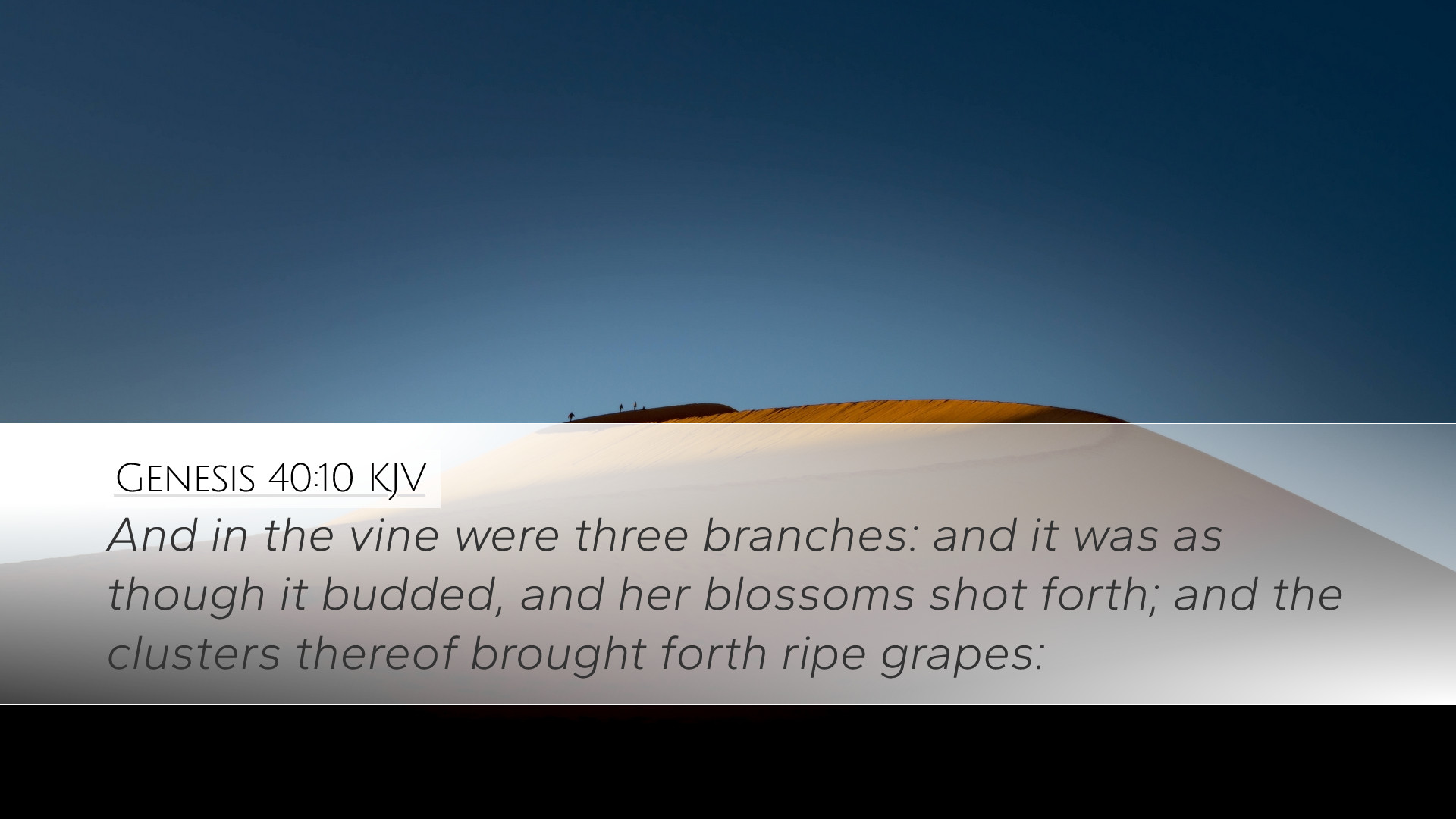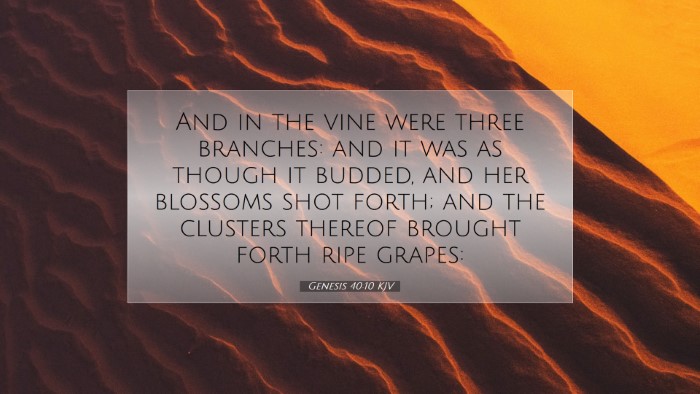Genesis 40:10 (KJV): "And in the vine were three branches: and it was as though it budded, and her blossoms shot forth; and the clusters thereof brought forth ripe grapes."
Commentary on Genesis 40:10
This verse is part of the account of Joseph's interpretation of the dreams of Pharaoh’s chief butler and baker while he is imprisoned. Both dreams serve as pivotal points in Joseph's life and highlight themes of hope and restoration amidst trial.
Overview of the Context
Verse 10 occurs within a dream experienced by the chief butler, wherein he sees a vine with three branches that budded and blossomed, ultimately producing ripe grapes. This imagery is rich in symbolism and conveys deep theological significance.
The Symbolism of the Vine
Matthew Henry notes that the vine often symbolizes both Israel and the blessings associated with the kingdom of God. It represents vitality, creativity, and the fruitfulness of faithful service. The three branches may signify three days until Pharaoh would restore the butler to his position, a critical point in the unfolding narrative of Joseph's life.
Adam Clarke expands upon this symbolism, suggesting that the vine also represents the connection between God's grace and the believer’s life. Just as the vine must be nourished and pruned to produce fruit, so too must individuals nurture their spiritual lives to bear the fruit of the Spirit. The budding and blossoming of the vine reflect divine favor which leads to restoration.
The Significance of Beginnings
The budding of the vine can be viewed as a metaphor for new beginnings and hope. Albert Barnes emphasizes this point by citing that the blossoming indicates a time of renewal and the promise of future blessings. It symbolizes the transitional phase from imprisonment to restored favor, not only for the butler but indirectly for Joseph as well. Joseph's interpretation leads to his eventual release and elevation, echoing the broader narrative of God's providence.
Theological Implications
-
Divine Providence: This verse underscores the idea that God is intricately involved in the affairs of men, orchestrating circumstances for His purposes. Joseph's ability to interpret dreams is not merely a talent but a sign of God's foresight and guidance.
-
Restoration and Redemption: The imagery of the vine producing ripe grapes signifies restoration after a period of suffering. Just as the butler's dream predicts his reinstatement, so too does this foreshadow God's redemptive plan, not just for individuals but for His people as a whole.
-
Fruitfulness as a Measure of Life: The productiveness of the vine can also be seen in Christian terms as a call to believers to remain in Christ, the true vine (John 15:1-5). The fruit of the Spirit—love, joy, peace—becomes a measure of faith and connection to God.
Application for Pastors and Theologians
In preaching and teaching, this verse (Genesis 40:10) demonstrates the importance of interpreting the signs of God’s work through our circumstances. Just as Joseph interpreted the butler's dream, pastors and theologians are called to help congregations discern God’s voice and presence in their lives. This includes:
- Encouragement: Reminding believers of God's faithfulness even in difficult seasons.
- Teaching on Productivity: Emphasizing that spiritual fruitfulness is a result of a healthy relationship with Christ.
- Restoration: Providing hope that God can bring healing and restoration, akin to the butler’s experience.
Conclusion
Genesis 40:10 serves as a powerful reminder of God’s control over human affairs and His ability to transform hopeless situations into opportunities for growth and renewal. The image of the vine is timeless, offering believers a visual representation of hope, restoration, and the necessary vitality found in Christ. As we reflect on this verse, may we embrace the assurance that just as the vine produced ripe grapes through God’s orchestration, so too can our lives bear fruit through divine enablement.


